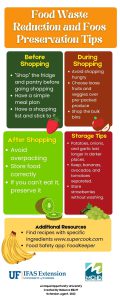Food is the third highest expenditure for the typical U.S. household, representing 11% of total household expenditures, and followed by housing (34.9%) and transportation (16%) (USDA, 2020). Food cost inflation has increased 3% each year over the past 100 years, with non-home (restaurant) food purchases presenting a higher inflation compared to those of grocery stores (USDA, 2020). The USDA projects an increase in food prices for 2023, for grocery store food prices could increase up to 3.5% and restaurant foods are predicted to increase up to 5% (USDA, 2022)
Food inflation causes
- Pandamic: The current rate of inflation was initiated by supply chain disruptions and increased demand during the recent pandamic, when people stocked up on food (Ngo, M, 2022).
- Avian Flu: This domino effect caused by the pandamic may cause your 2022 Thanksgiving meal to be 20% more expensive than last year (Tyko, 2022), especially due to the avian flu (that also affected poultry and egg prices).
- Global conflicts: Such conflicts affected gas prices and the ability of transporting food around the country, resulting in inflation.
- Droughts in western U.S. states can affect food growing and harvesting, and with less foodstuffs on the shelves, prices inevitably rise.
Food categories most affected
Figure 1. Food categories most affect by inflation in 2021. Retrieved from https://www.ers.usda.gov/data-products/food-price-outlook/food-price-environment-interactive-visualization/
Tips to reduce food cost during inflation
1. Menu swap: Inflation has affected the price of essential footstuffs — especially meats. Therefore, opt for other less affected protein sources such as lentils, beans, humus, garbanzo beans (chikpeas), or hard boiled eggs. These are quite nutritious and provide all essential amino acids necessary to build protein, and at much lower cost. For example, one pound of lentils costs an avarage of just $2 and has a long storage life. Consider incorporating beans more often into your diet, for it is not only economical but ideal for your heath. For more information about beans, peas, lentils and theirhealth benetits, read this guide.
Even if the prices of fresh fruit are higher, you can add more frozen and canned fruit to your diet. They rate well because they are also nutritious. Try to keep your daily consumption of fruit at least 1 1/2 cup per day, which is very easy to achieve. Since the price of fresh vegetables are the least affected by the current inflation, how about incorporating more vegetables into your diet? Aim for at least two cups of veggies per day to reap the health benefits. Consider exploring new recipes using veggies. Check this guide on healthful Mediterranean recipes that cost $2 or less per serving.
2.Reduce food waste: An average single American spends around $1,300 per year in food that is never consumed (Conrad, 2016). Most home food waste involves fruits and veggies (including herbs). Food waste can happen when we buy more than what we can eat, due to lack of menu planning, and due to food spoiling faster than what one can eat. Check the illustration below for tips on how to reduce food waste.
3.Food preservation practices: These include proper food storage and preservation, especially for fruits, veggies, and herbs. Learn about blanching techniques, proper freezing, and even canning. Watch the videos below on how to preserve these foods longer.
I hope you can use this information to eat both healthfully and within your budget during inflationary times, even during the Winter holidays! For additional helpful nutrition tips, please subscribe on the top right of the page to receive blog notifications from us.
Happy Holidays!
 4
4


